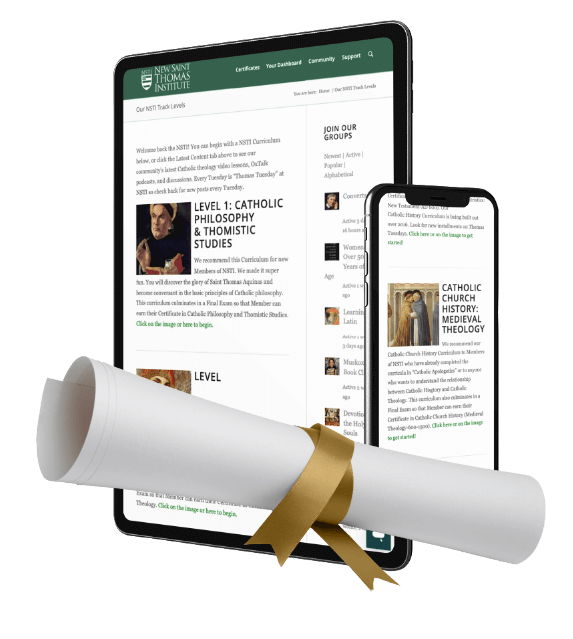You Must Eat My Flesh and Drink My Blood

Moving to our fifth apologetics topic in our big “Top Ten” doctrines most disputed by non-Catholics: Transubstantiation.
The Catholic Church defined the doctrine of transubstantiation at the Council of Trent in this way:
“Because Christ our Redeemer said that it was truly his body that he was offering under the species of bread, it has always been the conviction of the Church of God, and this holy Council now declares again, that by the consecration of the bread and wine there takes place a change of the whole substance of the bread into the substance of the body of Christ our Lord and of the whole substance of the wine into the substance of his blood. This change the holy Catholic Church has fittingly and properly called transubstantiation.”
This is to say that the reality of the bread changes into the actual body of Jesus Christ, even though the perceivable aspects of bread do not. Subtance is what is essential to a thing. Accidents are what are incidental to a thing. If you cut off the legs of a dog, it is still a dog. Thus, legs are accidental to a dog. If you burn a dog to ashes, it is no longer a dog. Thus you have changed the substance.
Transubstantiation teaches that God changes the bread’s (or wine’s) substance without changing the accidents. Thus while it is Christ, it still tastes, smells, and feels like bread.
First Objection: “Why define it? It is a mystery.”
As Anglicans we always said, “It is a mystery. Why define it?” The answer is quite simple. If you don’t define doctrine it will be distorted and lost. Saying “It’s a mystery,” is not responsible. That sort of answer can justify anything. Why can women be priests? It’s a mystery.
The Trinity is a mystery and yet we define what is Nicene Orthodoxy. The Person of Christ is a mystery, but we don’t believe that Monophysites are legitimate. Atonement is mysterious, and yet we define it. The most mysterious elements require boundaries to insure orthodoxy.
Second Objection: “Transubstantiation is Aristotelian and we don’t think that way anymore.”
Theology must be defined and often this requires philosophical language. Anyone who has actually studied Aristotle will see that Transubstantiation is a formal rejection of Aristotle’s metaphysics. In fact, Wycliff made this argument against transubstantiation and he sited Aristotle to justify his position.
For Aristotle substance and accidents can never be divorced. Yet transubstantiation teaches that they can indeed be separated. The substance of bread changes while the accidents remain. Aristotle would have never allowed for such a miracle in his worldview.
The terms “substance” and “accidents” are used by Aristotle (in their Greek equivalents). But that shouldn’t matter. You have to have a pretty hefty dose of Plato and deeply Greek understanding of metaphysics to grant that Christ is “homoousia” (of same substance) with the Father. That Christ has two natures in one “hypostasis” is pretty philosophical. And yet such language is appropriate. If we don’t define using highly specialized language we lose the mystery. These philosophical categories are helpful categories and a seven year old can understand it. It looks, tastes and feels (accidents) like bread but it is really (substance) the Body and Blood of Christ.
Why is the Miracle of Transubstantiation Necessary for Our Salvation?
Remember the Passover. It was not enough to simply slay the lamb and place its blood on your doorway. That was only half of it. You also had to eat the lamb. This is how you fully participated in redemption. Likewise, with the Old Testament sacrifices, eating the sacrifice was involved. Eating denotes our participation in what God has accomplished.
Christ is the Lamb of God who takes away the sin of the world by his precious blood-shedding on the cross. But God also wants us to eat of that Lamb, just as the Jews ate the Passover lamb. Christ said, “Unless you eat my flesh and drink my blood you have no life in you.” That is why “on the night in which he was betrayed, he took bread…”
He instituted the means by which we participate in the one sacrifice of Calvary – the Holy Eucharist.
But if the Eucharist is just a symbol then we don’t really partake of the real sacrifice. It’s smoke and mirrors. That is why the Catholic Church has always taught that the Eucharist truly is the Body and Blood of Christ. When a Catholic receives Communion, he receives the entire body, blood, soul, and divinity of Jesus Christ and receives the eternal life and love of Christ, and thus the infinite grace of the Trinity. Therefore, the Eucharist must be the very same Christ, the very same substance of Him who died and rose again for our salvation. This is my Body. This is my Blood. Why not trust Him on it?
What to Watch Next
SHOP THE TAYLOR MARSHALL STORE
Dive Deeper

GET CONFIDENT IN YOUR FAITH
Explore the fascinating world of Catholic teachings with Dr. Marshall. Together you’ll unpack the brilliant answers the Church gives to tough questions about the Faith. The best part: you go at your own pace. Start this exciting journey today.


 >
>


